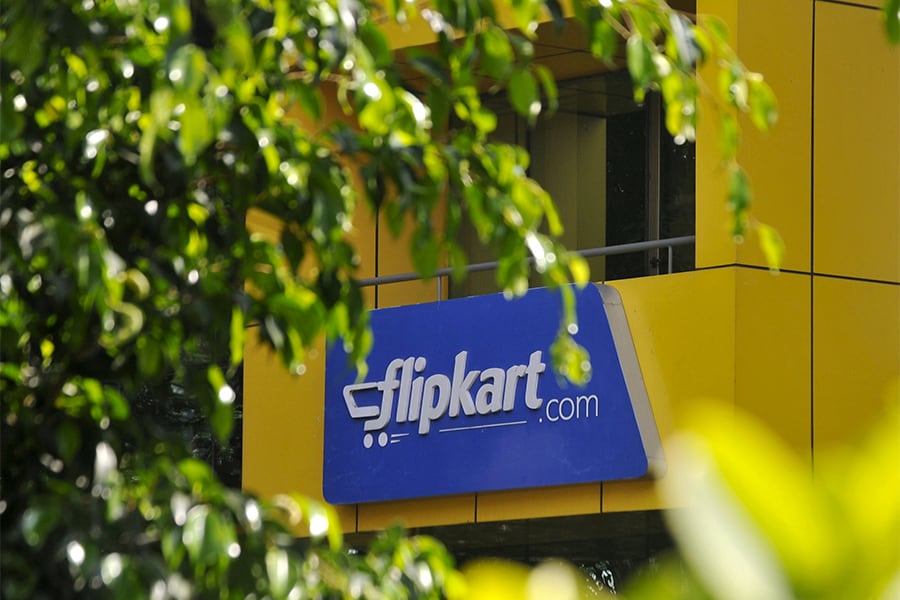Flipkart's mandate: the 'need to keep investing' until the dust settles
While the latest cut infuses a dose of realism, any future ecommerce scenario in India can't ignore Flipkart, industry experts say



Image: Abhishek Chinnappa / Reuters
Flipkart watchers got a bit of a shocker on Tuesday with a mutual fund slashing the value of the small number of shares it holds in India’s biggest online commerce company.
At the end of the September quarter, the 1,969 shares it held in Flipkart were worth $52.13 apiece, a 38.2 percent decrease from three months earlier, Morgan Stanley said in a filing with the US capital markets regulator.
The timing is awkward for Flipkart, which is believed to be in talks to raise as much as $1 billion in fresh funding. The last publicly known fund raise and the associated valuation was $700 million that investors including Tiger Global put into the eight-year old Indian startup around July 2015, valuing it at more than $15 billion.
Going by Morgan Stanley’s latest reckoning, that value would plummet to about $5.5 billion.
“I wouldn’t read too much into it,” Ankur Bisen, senior vice president for retail and consumer products at Technopak, a consultancy told Forbes India by phone. That said, “it infuses a dose of realism into the valuation compared with last year when it is was off the charts.” Some of the possible bets that investors may have anticipated last year, such as consolidation sooner rather than later, haven’t come to pass yet, which may have influenced the more sober math, he reckons.
Three weeks ago, Chairman and co-founder Sachin Bansal had this to say on the current state of affairs, speaking at a tech conference in Bengaluru: “When we are looking at 2 percent penetration of ecommerce, we can’t say ‘oh we’ve now reached a level of penetration and let me just start thinking of making money.’”
Bansal is pointing to how 98 percent plus of retail in India, is still offline. “The question to ask is, what is the right time? What is the time when we can say market has stabilised, sustaining low double-digit growth for the next 20-30 years — that’s when we think of profitability, but that’s not what is happening.”
The market is still growing at high triple digits and will continue that way for the forseeable future, Bansal expects. In that scenario, “we have to ensure that talent keeps coming in, we have to keep building systems and processes for the future.”
Technopak data projects India’s online commerce to rise from $15 billion today to as much as $50 billion by 2020.
Bisen points out that experience from the US, the world’s most advanced economy, is that online commerce follows the 80:20 rule in the sense that 80 percent of it will be dominated by two players and the remaining 20 percent will comprise niche players “who will continue to survive.” India’s $15 billion online commerce market today, however, comprises a dog fight amongst Flipkart, Snapdeal, Amazon, Paytm, backed by Alibaba Group, and Shopclues.
The most likely scenario, Bisen says, even if one assumes that one of the eventual two dominant 80-percenters will be Amazon, given their public commitment to build their Indian base on their own, the eventual other entity will include Flipkart in some way or other. Flipkart backed by a large investor, Flipkart combining with Snapdeal, Flipkart buying the others with help from a large investor or clutch of investors, take your pick.
“Flipkart has been a category creator in India… you have to give them that credit,” Bisen said. And today, even at 2 percent ecommerce penetration, Flipkart is so big that it’s very unlikely that an eventual rival to Amazon in India will not be an entity dominated by Flipkart, he feels.
Back at the tech conference, Bansal also offered some clues into how Flipkart might get there: Today, any internet company that will survive and thrive over the next five years will have to necessarily be one that is heavily built around data, he said.
“That requires investment again. So we need to keep investing, we need to keep investing in supply chain — physical supply chain as well as technology.”
Business models which aren’t able to get the masses of India on board and are just serving the elite, will probably have to close down or sell. Businesses that can serve Indian needs and aspirations, solve problems using local resources in a much more efficient way will thrive.
“If you want to beat NASA (the pioneering US space agency) don’t try to become another NASA, but try to be an ISRO, which has done the same thing at much lower cost in a very Indian way.” He was referring to achievements of the Indian Space Research Organisation, which include a successful Mars orbiter satellite program that is said to have cost a tenth of an equivalent NASA mission.
In the larger scheme of things, ten years down the line, there will not only be some large Indian internet companies, but they will be buying some US counterparts of their own as well as going to other developing countries, Bansal says. Zomato might be an early example, perhaps.
“India’s model will be the best suited model for the 4 billion or so people on the planet who aren’t yet online.” Therefore Flipkart is “absolutely not scared of Amazon or Alibaba,” he added.
First Published: Nov 30, 2016, 18:35
Subscribe Now